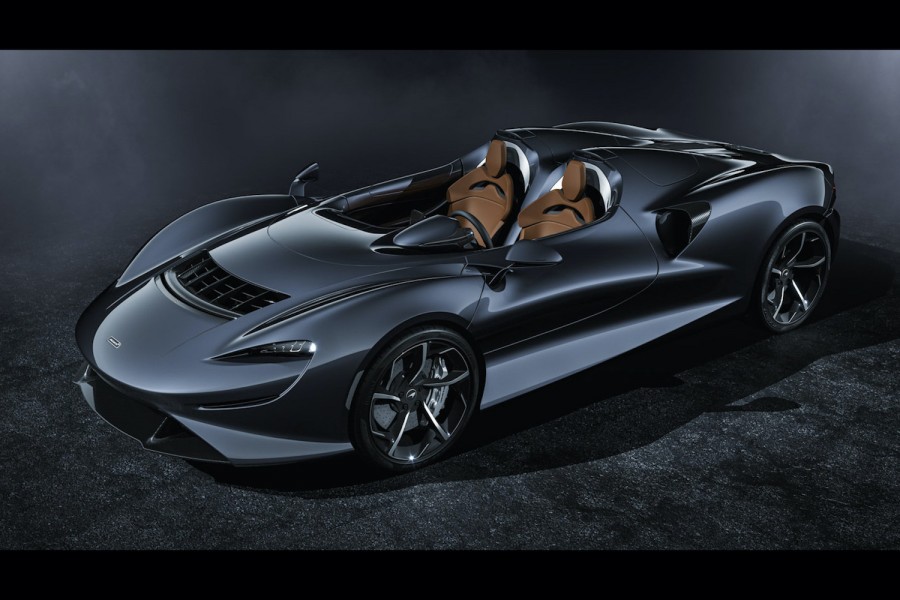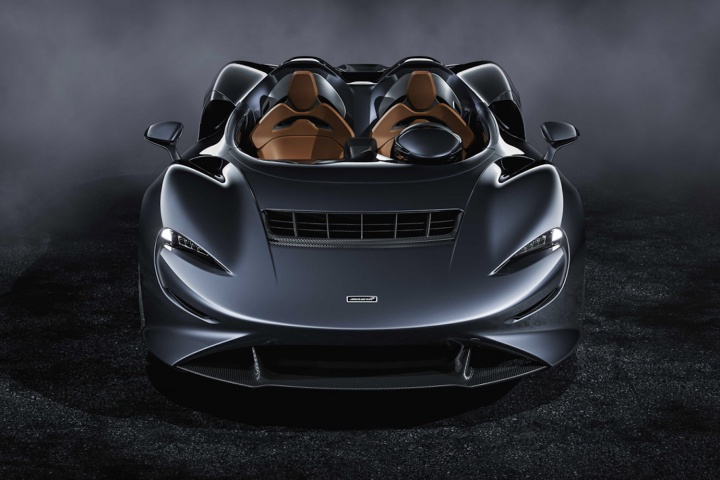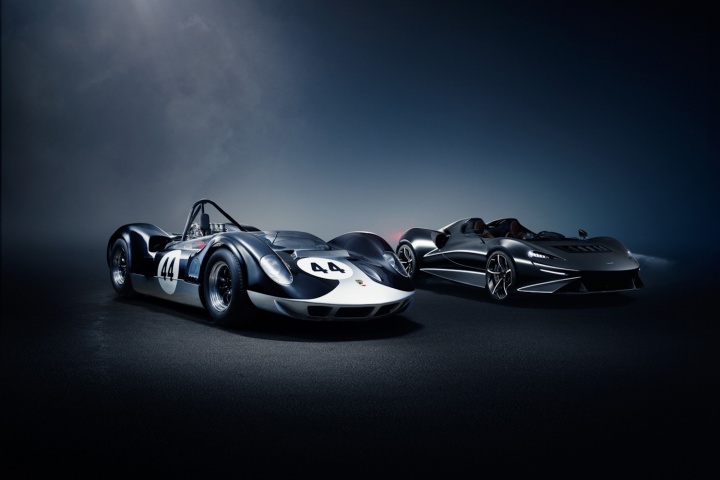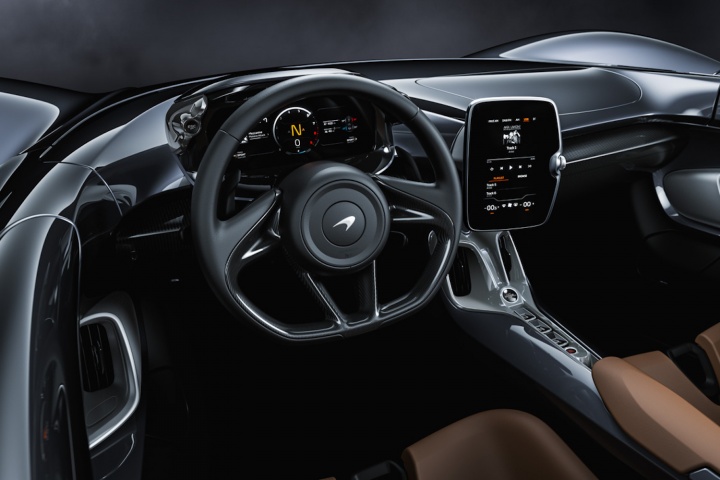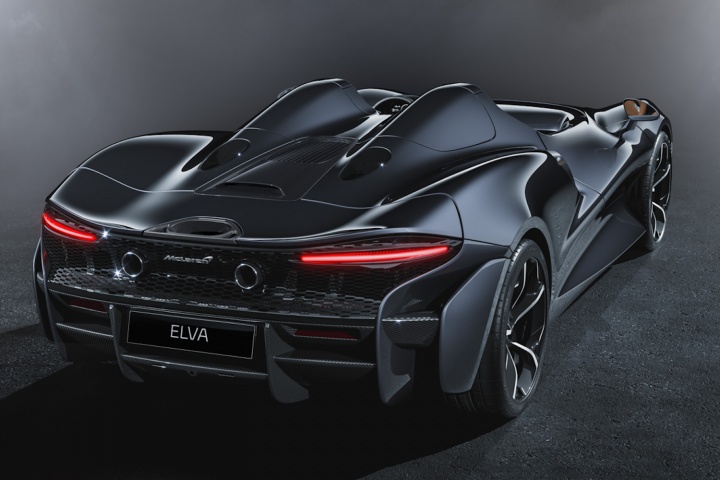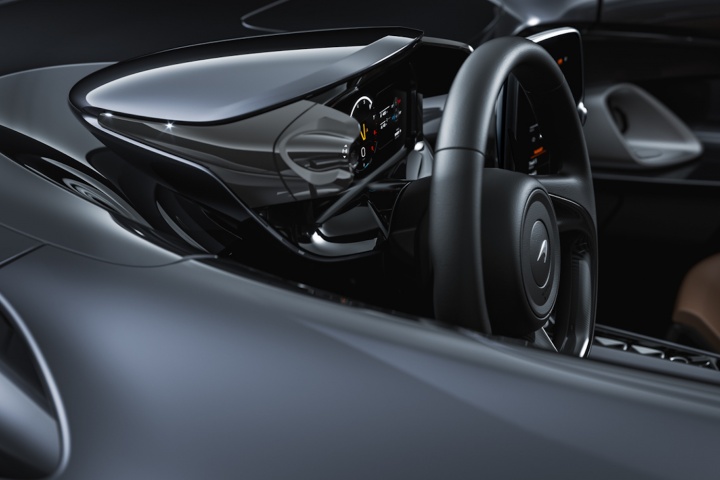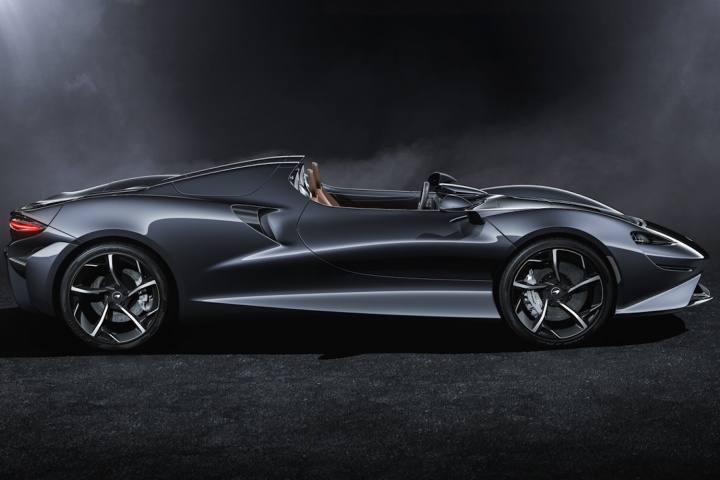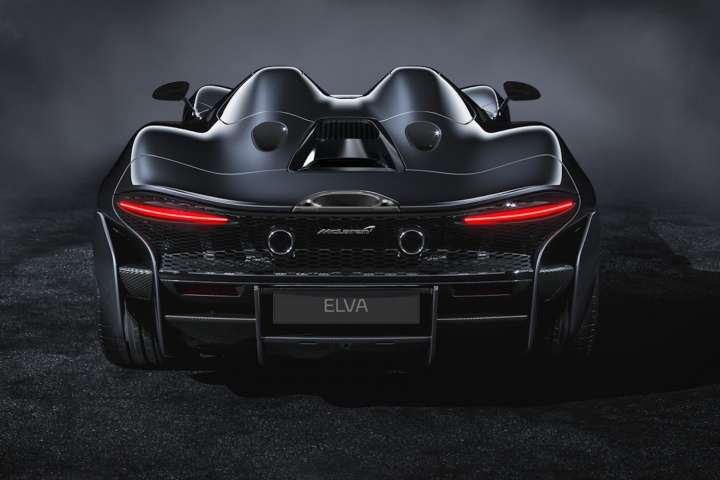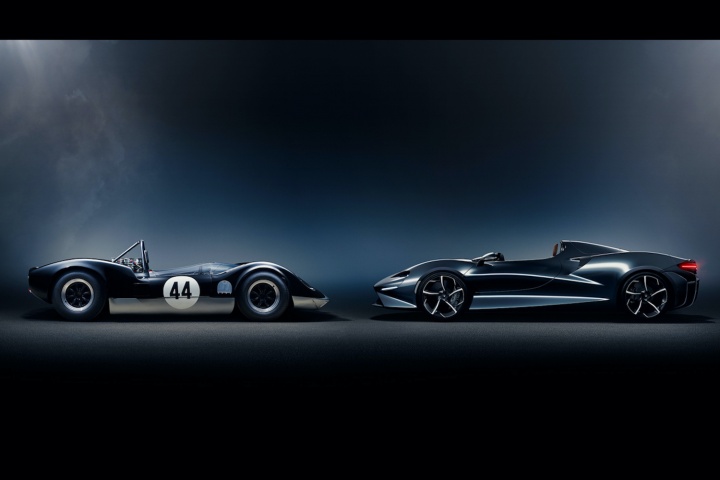McLaren has launched its most extreme car yet, the super-light, super-fast, Elva.
Elva name links back to sixties racers
You may well be wondering why a McLaren comes with a name, when they usually have numbers. Well, that's because Elva was the name Bruce McLaren gave to his M1 and M1A racing cars of the 1960s, which were customer versions of his self-designed Group 7 racers.
Like those originals, the new Elva is a terrain-hugging two-seat roadster, and comes as standard with no windscreen nor roof. But with plenty of speed...
The carbon-fibre chassis is bespoke to the Elva, and the 4.0-litre twin-turbo V8 shared with the rest of the McLaren lineup. Here it's in 815hp form, and McLaren says that's enough to shove the Elva to 100km/h from rest in under three seconds. heck, to get to 200km/h takes just 6.7 seconds. It's basically the engine from the Senna in a slightly different state of tune, and drives the rear wheels through a seven-speed paddle-shift gearbox.
"The McLaren Elva is a true ultimate roadster; it exists purely for the pleasure of driving, to deliver an enthralling and immersive experience born from the ultimate connection between the car, the driver and the elements. The lightest road car we've ever built at McLaren Automotive, the Elva is incredibly agile and ferociously fast, its 815PS twin-turbocharged V8 engine providing breathtaking performance that heightens every sense" said Andy Palmer, Vehicle Line Director - Ultimate Series, McLaren Automotive.
Ultralight carbon chassis
As with all of McLaren's cars, the chassis is constructed entirely of carbon-fibre, and in the case of the Elva, so too is the body. McLaren says it has been fanatical about weight saving, even trimming some of the carbon panels down to as little as 1.2mm in depth in order to shave off a few more grammes.
The front clamshell of the car is that thin, yet it's actually one giant panel, wrapping around the whole front of the car with no joins or panel gaps. The side panels are also one gigantic unit each, three metres long, which run from the front of the car all the way around to the active rear spoiler. The doors are the usual McLaren dihedral-hinged items, and while the entire interior and floor is made up of 'naked' carbon-fibre, you can have non-slip sections dotted around the place to make getting in and out a little more elegant.
Light brakes
The brakes are 390mm discs, made from a process of carbon sintering - that takes much longer than making a conventional braking disc, but the material is then stronger and more heat resistant. That means the discs can be smaller and lighter, to the benefit of unsprung weight. They get titanium caliper pistons too, which alone helps to save one-kg compared to conventional items.
McLaren claims that the Elva has the lightest kerb weight of any current series production car, although the final homologated weight is still TBC. It'll be doing well to get near the original 60s Elva's 551kg, though...
Needless to say, with no windscreen, windows, or roof (a windscreen is available as an optional extra) you might think you'll need to wear a crash helmet when driving your Elva. McLaren, though, says you won't need to - it has patented a new system called Active Air Management System (AAMS). This channels high speed, high pressure air up from under the front of the car, out through a vent in the front clamshell, which combined with a little carbon-fibre flap, creates a 130-degree protective shell of high speed air moving over and around the cockpit. It won't protect you from a bug in the teeth, but it should mean that you can drive your Elva in relative comfort.
When the AAMS system is not in use (usually at urban speeds) this air flow isn't simply shut off, it's instead redirected to the cooling system, helping to feed more cool air to the turbos, and also to help cool the gearbox.
There are other, separate, carbon channels in the front clamshell that duct air outward into the door intakes, which then feed the engine's main radiators and, through the exposed air filters at the back, the intake system.
In terms of style, the Elva's swoopy, low, body has been designed to flow seamlessly into the structure of the cabin. There's a central spar, which incorporates the armrest and the buttons for gear selection, while the seats - also made of carbon-fibre - are designed to look like a natural extension of the bodywork. To make it possible to stand up in the open cockpit, and simply step out of the car, the seat squabs have been made a little shorter than usual.
In front of the driver and passenger is an unimpeded view of the road ahead, and McLaren has striven to make sure that the bits of the car that you can see have a flowing, natural, pebble-like quality about them. The major switches and buttons are grouped on the outer edges of the instrument panel, so that the driver doesn't have to take their hands off the wheel to work them, while the eight-inch infotainment screen has a new menu layout that allows you to flick more easily between various menu functions. The system shows a range of applications on the screen, including satellite navigation, McLaren Track Telemetry, rear-view camera and climate control and is mounted on a lightweight carbon fibre arm and tilted towards the driver.
Behind the seats, there's a small stowage area, big enough for a couple of crash helmets, or some small squashy bags, and that's covered by a carbon tonneau cover with soft-close hinges.
Optionally, you can have the cabin decked out in full aniline leather, which comes with an extra layer of weather protectant on the material. You can also have 'UltraFabric' - a breathable synthetic material that offers a very different proposition to leather; comprising four layers, the outer two surfaces providing durability and moisture resistance and the inner layers adding a reinforced rayon-fibre base and cushioning, the Ultrafabric helps to 'grip' you in the seat.
There's no stereo as standard (in the interests of weight saving) but you can optionally spec one if you like, at no extra cost. Further non-cost options include five-spoke super-lightweight forged alloy wheels in lieu of the ten-spoke ultra-lightweight wheels fitted as standard; track-focused Pirelli P Zero Corsa tyres rather than Pirelli P Zero tyres; and a vehicle lift system.
You can also, of course, customise the colour of both the body and cabin as much as you like, and McLaren even offers the option of white gold or platinum badges. Oh, and in the spirit of the original McLaren F1, the engine's heat shield can also be optionally specced in 24-carat gold foil.
The price for all this? Well, it's STG£1,425,000 in the UK, so expect to pay around €3 million to get one in Ireland. Only 339 will be made, so get your credit union account going soon...
"McLaren continues to push the boundaries of supercar and hypercar development in pursuit of outstanding and unparalleled driving experiences for our customers and the McLaren Elva epitomises that pioneering spirit. The McLaren-Elva M1A [Mk1] and its successors are in many ways the true spiritual forerunners of today's McLarens - superlight, mid-engined cars with the highest levels of performance and dynamic excellence. It's fitting that the new McLaren Ultimate Series roadster - a uniquely modern car that delivers the ultimate connection between driver, car and the elements and with that new heights of driving pleasure on road or track - acknowledges our rich heritage with the Elva name" said Mike Flewitt, CEO, McLaren Automotive.

